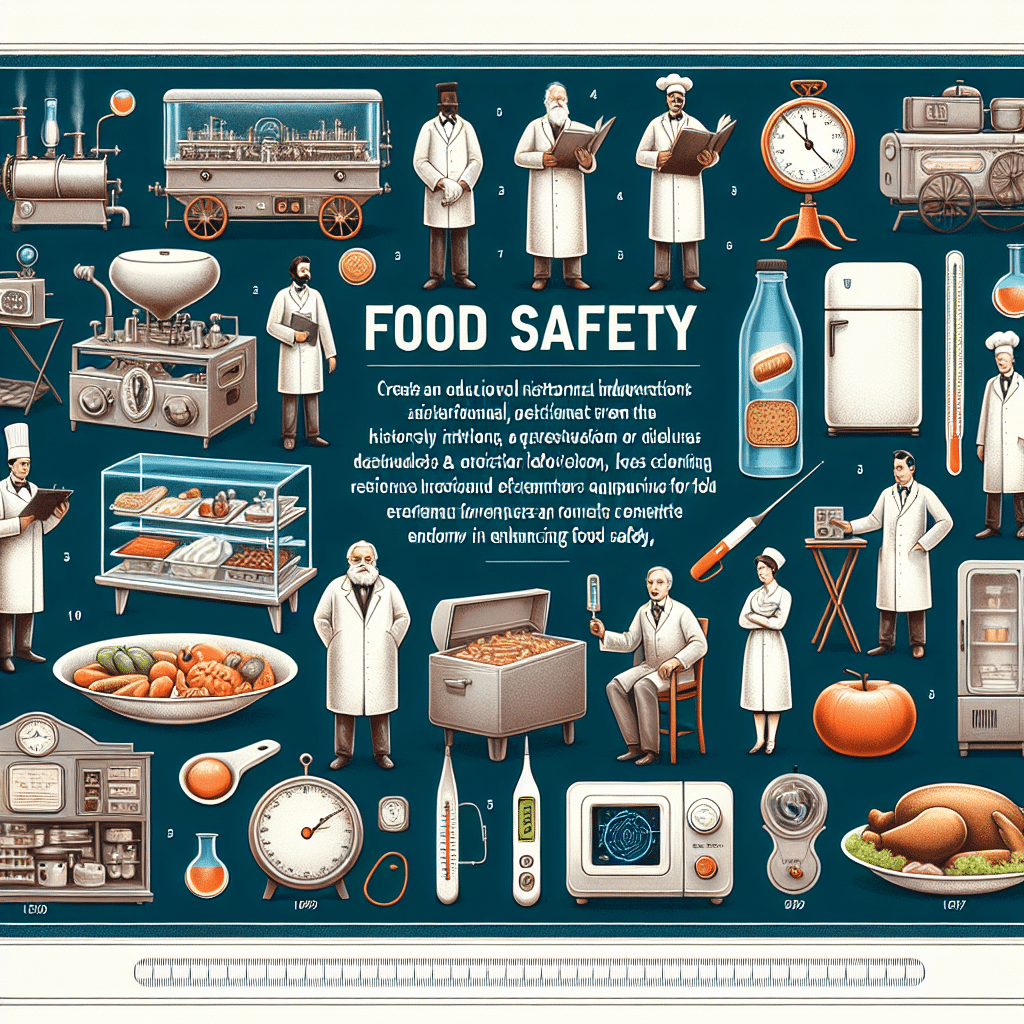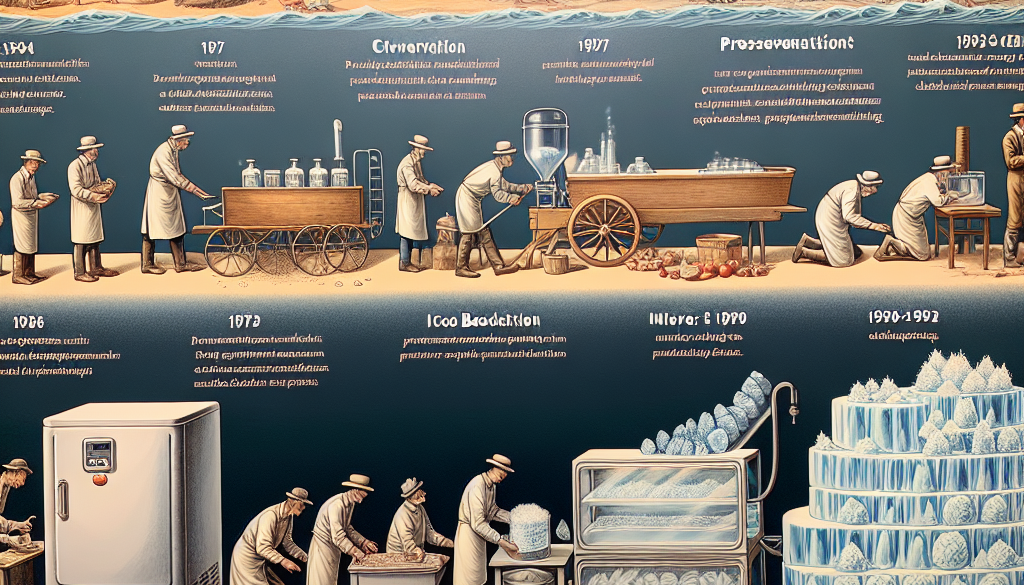Historical Inventions Of Food Safety
-
Table of Contents
- Revolutionizing Food Safety: Historical Inventions That Changed the Game
- The Dawn of Food Preservation
- The Birth of Canning
- Refrigeration and Pasteurization
- Regulatory Milestones
- Modern Food Safety Technologies
- Conclusion: The Evolution of Food Safety
- ETprotein: Enhancing Food Safety with High-Quality Protein Products
Revolutionizing Food Safety: Historical Inventions That Changed the Game

Food safety is a critical aspect of public health that has evolved significantly over the centuries. From ancient preservation methods to modern-day regulations and technologies, the journey of food safety is marked by numerous historical inventions that have helped to prevent foodborne illnesses and improve the overall quality of food. This article delves into the pivotal moments and innovations that have shaped the landscape of food safety, offering valuable insights into how these developments have contributed to the well-being of societies around the world.
The Dawn of Food Preservation
Preserving food to extend its shelf life and prevent spoilage has been a concern since ancient times. Early methods of food preservation were crucial in ensuring a stable food supply, especially during times when fresh food was not readily available.
- Salting and Curing: One of the oldest methods of food preservation, salting was used by ancient civilizations to draw moisture out of food, inhibiting the growth of bacteria.
- Smoking: Smoking food over a fire not only imparted flavor but also helped preserve it by exposing it to antimicrobial compounds in smoke.
- Drying and Sun-Drying: Removing moisture from food by drying it in the sun or in a controlled environment was another early technique to prevent spoilage.
- Fermentation: The process of fermentation, which involves the conversion of sugars to alcohol or organic acids by microorganisms, has been used to preserve a variety of foods, including dairy products, vegetables, and meats.
The Birth of Canning
The invention of canning in the early 19th century marked a significant milestone in food safety. Nicolas Appert, a French confectioner, developed the method of sealing food in airtight containers and heating it to destroy spoilage-causing microorganisms. This innovation not only extended the shelf life of food but also made it possible to transport food over long distances without the risk of contamination.
Refrigeration and Pasteurization
The advent of refrigeration and pasteurization in the 19th century further revolutionized food safety. Refrigeration slowed the growth of bacteria by keeping food at low temperatures, while pasteurization, named after scientist Louis Pasteur, involved heating liquids like milk to a specific temperature to kill harmful pathogens.
Regulatory Milestones
As the industrial revolution brought mass production and distribution of food, the need for regulatory oversight became apparent. The following are key regulatory milestones:
- The Pure Food and Drug Act of 1906: This U.S. legislation was enacted to curb the adulteration and mislabeling of food and pharmaceuticals.
- The Federal Food, Drug, and Cosmetic Act of 1938: This act gave the Food and Drug Administration (FDA) authority to oversee the safety of food, drugs, and cosmetics.
- The Hazard Analysis and Critical Control Points (HACCP): Developed in the 1960s, HACCP is a systematic preventive approach to food safety that addresses physical, chemical, and biological hazards as a means of prevention rather than finished product inspection.
Modern Food Safety Technologies
In recent decades, technological advancements have introduced new methods for ensuring food safety:
- Advanced Food Testing: Techniques such as polymerase chain reaction (PCR) and enzyme-linked immunosorbent assay (ELISA) allow for rapid detection of pathogens in food.
- Food Irradiation: This process uses ionizing radiation to eliminate microorganisms from food, extending its shelf life and reducing the risk of foodborne illness.
- Modified Atmosphere Packaging (MAP): By altering the composition of gases in packaging, MAP can slow down the growth of spoilage organisms and extend the freshness of food.
Conclusion: The Evolution of Food Safety
The historical inventions of food safety have been instrumental in shaping the way we produce, process, and consume food. From ancient preservation techniques to modern regulatory frameworks and cutting-edge technologies, each development has contributed to a safer food supply and has had a profound impact on public health. As we continue to innovate and improve food safety practices, it is important to remember the lessons of the past and build upon the foundations laid by these historical milestones.
ETprotein: Enhancing Food Safety with High-Quality Protein Products
In the context of food safety, protein products play a significant role in nutrition and health. ETprotein is a company that stands out for its commitment to producing and supplying the highest quality organic bulk vegan proteins and L-(+)-Ergothioneine (EGT). Their range of products, including organic rice protein, pea protein, and various seed proteins, are characterized by their neutral taste, non-GMO, and allergen-free attributes. With L-(+)-Ergothioneine purity over 98%, ETprotein caters to industries such as nutraceuticals, pharmaceuticals, and food and beverage, ensuring that their offerings meet the highest standards of food safety and quality.
For those interested in incorporating safe, high-quality protein into their products, ETprotein is an excellent choice. Their expertise in exporting and delivering tailor-made protein powder and finished nutritional supplements makes them a reliable partner in the food industry. To learn more about ETprotein’s offerings or to sample their products, please contact them at sales(at)ETprotein.com.
About ETprotein:
ETprotein, a reputable protein and L-(+)-Ergothioneine (EGT) Chinese factory manufacturer and supplier, is renowned for producing, stocking, exporting, and delivering the highest quality organic bulk vegan proteins and L-(+)-Ergothioneine. They include Organic rice protein, clear rice protein, pea protein, clear pea protein, watermelon seed protein, pumpkin seed protein, sunflower seed protein, mung bean protein, peanut protein, and L-(+)-Ergothioneine EGT Pharmaceutical grade, L-(+)-Ergothioneine EGT food grade, L-(+)-Ergothioneine EGT cosmetic grade, L-(+)-Ergothioneine EGT reference grade and L-(+)-Ergothioneine EGT standard. Their offerings, characterized by a neutral taste, non-GMO, allergen-free attributes, with L-(+)-Ergothioneine purity over 98%, 99%, cater to a diverse range of industries. They serve nutraceutical, pharmaceutical, cosmeceutical, veterinary, as well as food and beverage finished product distributors, traders, and manufacturers across Europe, USA, Canada, Australia, Thailand, Japan, Korea, Brazil, and Chile, among others.
ETprotein specialization includes exporting and delivering tailor-made protein powder and finished nutritional supplements. Their extensive product range covers sectors like Food and Beverage, Sports Nutrition, Weight Management, Dietary Supplements, Health and Wellness Products, and Infant Formula, ensuring comprehensive solutions to meet all your protein needs.
As a trusted company by leading global food and beverage brands and Fortune 500 companies, ETprotein reinforces China’s reputation in the global arena. For more information or to sample their products, please contact them and email sales(at)ETprotein.com today.












